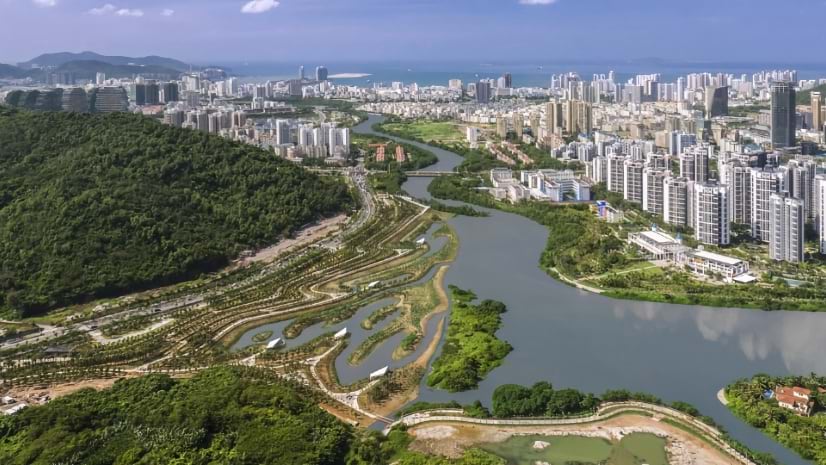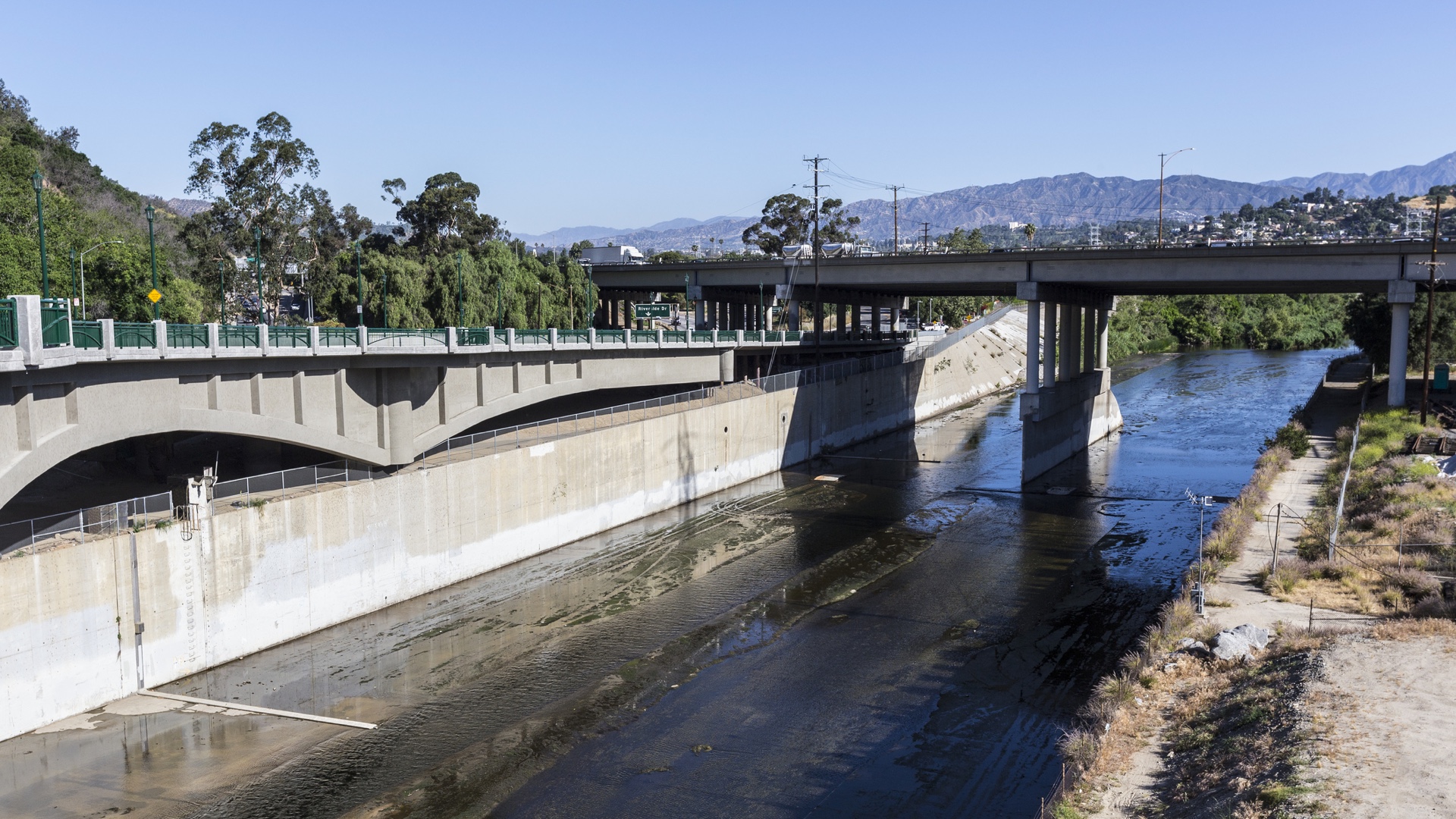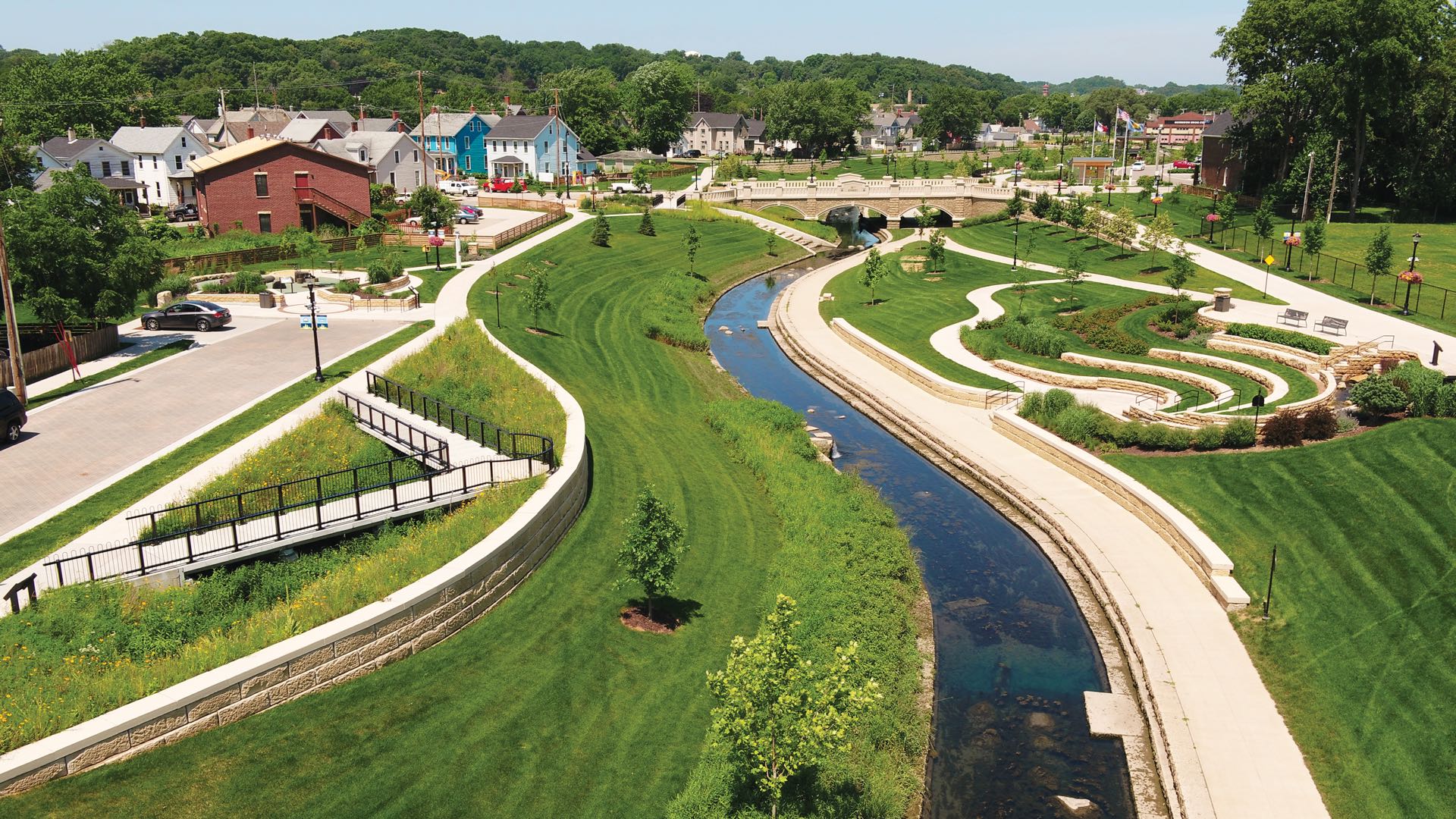

May 14, 2024

When he was 10 years old, growing up a farmer’s son in a small village in Zhejiang Province of China, Kongjian Yu fell into a river. The water flowed slowly, and he was able to grab ahold of a willow branch to save himself.
Within 10 years, the river was completely transformed and far more dangerous.
“In the 1980s, we copied what the Americans and Europeans were doing with all these pipe systems,” Yu said. The river was channelized, the trees were removed, and the water became swift and prone to destructive flooding. Had the river been this way when Yu fell in as a child, he’s sure he would have drowned.
The mechanized landscape imposed on the river had other disastrous effects. It destroyed nature and livelihoods in Yu’s home village. “The birds stopped coming,” he said. “We lost the wetlands the buffalo needed.”
Motivated by his childhood experiences, Yu would eventually create the “sponge city” concept—designing a landscape that mimics a natural wetland.
The destruction of what he calls a paradise set Yu on a path of study. He wanted to understand the power and benefits of water. He chose landscape architecture and studied geodesign, a method of design and planning informed by geography. He applied geographic information system (GIS) technology to take a holistic and data-driven approach to landscape-level interventions.
Yu’s method of using the landscape to capture, filter, and store rainfall has been adopted at 640 sites in 250 municipalities across China. By adapting to water rather than fighting it, the sponge city concept beautifies riverbanks, makes them more resilient to flooding, and improves the lives of people.
Yu recently won landscape architecture’s top recognition. When announcing the award, the 2023 Oberlander Prize committee called Yu a “brilliant and prolific designer … [who] is also a force for progressive change in landscape architecture around the world.”
Yu developed the sponge city concept as a doctoral student at the Harvard University Graduate School of Design (1992–1995), where he studied geodesign with Carl Steinitz. He was also inspired by Ian McHarg, the founder of ecological design and author of the influential book Design with Nature.
This coursework informed Yu’s thesis on landscape and ecological security patterns. The premise looks at places where portions and positions of the landscape have critical significance in safeguarding species and controlling ecological processes.
Yu was able to demonstrate this concept as a product testing team intern at Esri in 1994. “I used GIS to simulate how animals move, the corridors of critical habitat, and where keystone species are,” he said. “It’s about knowing the most important areas, networks, or patterns to protect the integrity of the ecosystem.”
Yu’s sponge city concept takes a similar approach to restoration. Data and modeling inform large-scale projects to transform neglected urban areas and former industrial sites into landscapes that serve both ecological and social functions.
Yu has used GIS as part of his practice at Turenscape where he employs 400 people to create sponge city projects. As a professor, he has also exposed more than 1,200 students at Peking University to GIS in the landscape architecture department he founded.
While it’s a tool in his work, he says GIS is far more than software. “It’s a way of thinking, a way of organizing knowledge in layers, a way of representation,” he said. “It becomes a scientific way to design the world.”
Yu describes his work as solving problems artfully. “It’s a science and an art,” he said. He sketches the places he will transform, drawing long sculptural features that will also provide an ecological service. His team does a lot of mapping and quantifying of landscape values, such as the types and porosity of soils. The team members simulate the behavior of water at different widths and depths. Features are refined for their function and how visitors will experience them.
Nature-based designs—ponds, wetlands, and planted landscapes—replace metal and concrete in Yu’s designs. He often chooses to terrace slopes, create ponds, and plant reeds and willows alongside the water, re-creating the landscapes of his youth.
“You must put the biodiversity layer together with the built layer,” he said.
The results have repeatedly shown that the materials of a sponge city can cost far less and provide more value than concrete and pipes do.
At Turenscape, Yu creates spaces that serve biodiversity purposes as well as such needs as agriculture and recreation. Creations return wildlife corridors to the landscape to achieve ecosystem security for species.
“Where water and land meet, you have life,” he said. “Art and science can come together to make biodiversity beautiful.”
Yu believes his boyhood of farming in a monsoon landscape was good practice to address climate change. He saw how his ancestors used terraced fields and ponds to store monsoon rainwater for the dry season because adaptation was needed.
Now, he would like to see the sponge city concept implemented across regions, nations, and the world—with urgency. He feels keeping water in place is important to cool our cities and even stop sea level rise.
“We have performance data to show that sponge cities increase biodiversity, clean the water, and solve the problem of urban flooding,” Yu said. “In addition, people love them. It lowers maintenance costs, and it triples and even quadruples property values in surrounding areas.”
With all those benefits, Turenscape is in high demand during a peak period of China’s urban development. The work has expanded elsewhere too, including Thailand, Singapore, and several US cities.
Jack Dangermond, president of Esri, has called Kongjian Yu’s sponge city concept a gift from China. “It’s appealing, people understand it right away, and it’s doable everywhere,” Dangermond said. “It’s wonderful work.”
Learn how the geodesign framework and technology create designs in harmony with nature.


